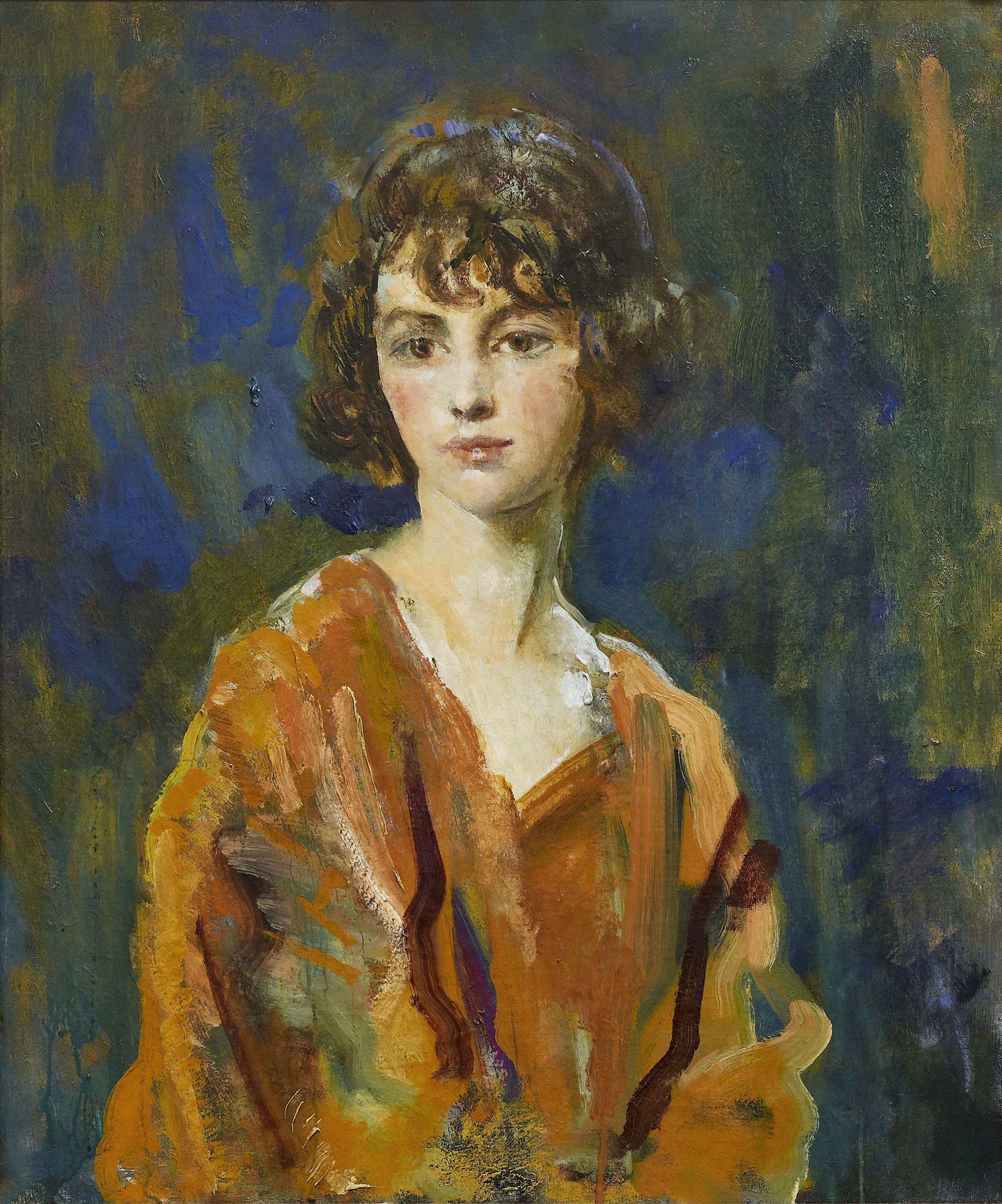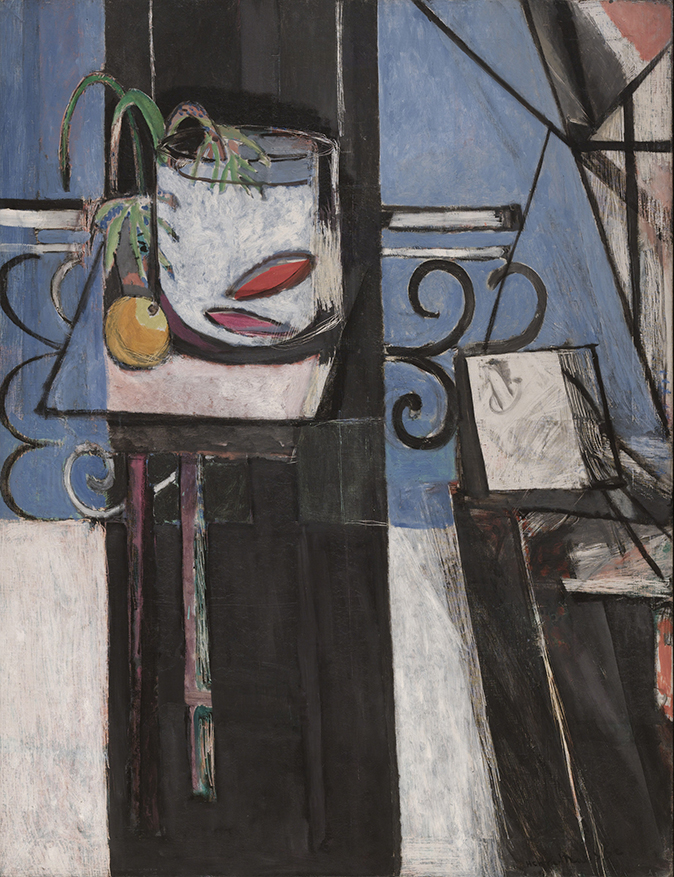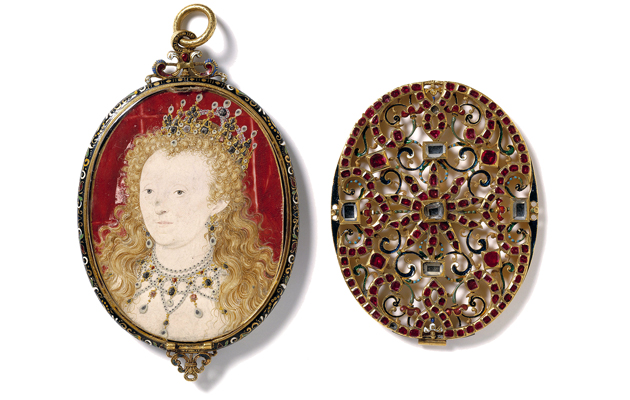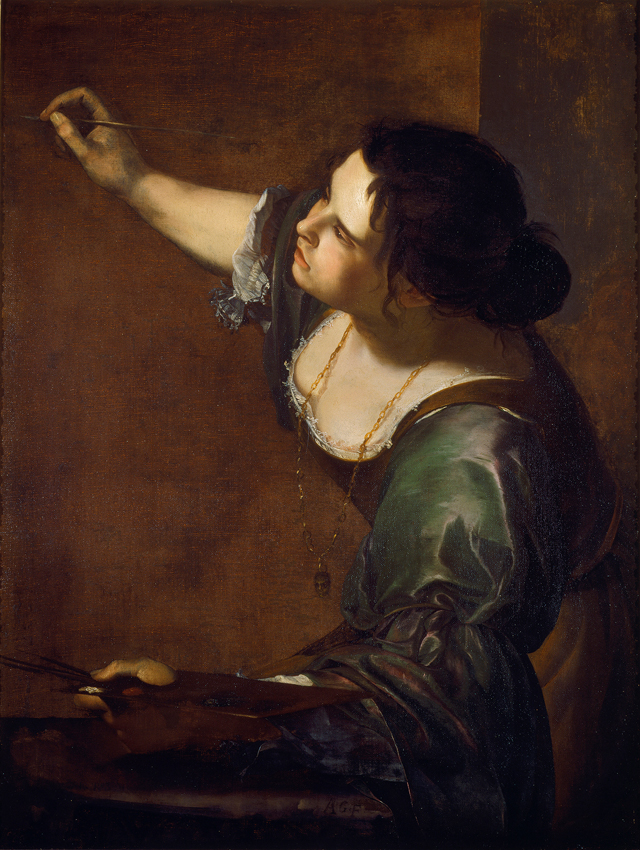My Favourite Painting: Robin Muir
Photographic historian Robin Muir chooses a portrait by Ambrose McEvoy.


Robin Muir on The Hon Lois Sturt by Ambrose McEvoy
'Wealthy Lois Sturt had a brief career as an actress, making three films, all forgettable. Thereafter, she became a cheerleader for the Bright Young People, who cut a swathe across London.
'Her next public appearance was at Marylebone Court. She had devised an all-night drive-by treasure hunt and been summonsed for narrowly avoiding a policeman. “But I had to get there before some-one found the next clue!” she wailed.
'In 1926, she ran over and killed a pedestrian. Neither incident changed her lifestyle in the slightest and, in 1937, she died suddenly in Budapest. All this lay before her when she sat for this vivid portrait. Perhaps the sparks of explosive colour indicated what was to come?'
Robin Muir is a photographic historian and consultant to the Vogue Archive. His exhibition ‘Cecil Beaton’s Bright Young Things’ is scheduled to open at the Millennium Gallery, Sheffield, on April 1.
John McEwen on The Hon Lois Sturt
Lois Sturt (1900–37) was considered the ‘brightest of the bright young 1920s things’ and, according to the formidable artist/writer Percy Wyndham Lewis, ‘the most beautiful debutante of her day’. In an age of chaperones, ‘Bacchante’ (her nickname) smoked, drank, partied and, on a nocturnal London treasure hunt, was arrested in Regent’s Park at 2am for topping 50mph and failing to stop at the request of a policeman.
The Yorke family of her mother’s side embodies beauty and free spirit — Lois’s beautiful mother, Lady Feodorowna, was the daughter of ‘Champagne Charlie’, the Earl of Hardwicke. But Lois was also a pioneer: a professional artist with a London studio, who earned a pilot’s licence, starred as Nell Gwyn in The Glorious Adventure, Britain’s first colour feature film, and was a rare female racehorse owner.
The brief romantic interest of Prince George, Duke of York, was ended by George V. A marriage of convenience secured Lois a title, but ended in divorce. As a shooting star should, she died at 37.
In the National Portrait Gallery’s 1920 annual show, there were seven portraits of her. She sat most to Ambrose McEvoy, whose rich colours and hasty technique captured her beauty and the ‘whiff of danger’, as art dealer Philip Mould called it, suitable to her character.
McEvoy, the son of a London-based Scotch engineer, was talent-spotted by Whistler and entered the Slade at 15. He was a Royal Naval Division war artist, but is best known as the portraitist who, above all, captured the exuberant Society belles of Roaring Twenties England.
Mr Mould’s 2019–20 exhibition ‘Divine People: The Art of Ambrose McEvoy’ marked his revival; as does ‘Cecil Beaton’s Bright Young Things’, scheduled for the Millennium Gallery, Sheffield (April 1–July 4) and then The Wilson, Cheltenham, Gloucestershire. This portrait is its climax.
Sign up for the Country Life Newsletter
Exquisite houses, the beauty of Nature, and how to get the most from your life, straight to your inbox.

My favourite painting: Andrew Lawson
'It amazes me that this painting was made more than a century ago'

My favourite painting: Matthew Girling
Matthew Girling chooses his favourite painting for Country Life.

My favourite painting: Sandi Toksvig
Sandi Toksvig chooses her favourite painting for Country Life.
Country Life is unlike any other magazine: the only glossy weekly on the newsstand and the only magazine that has been guest-edited by HRH The King not once, but twice. It is a celebration of modern rural life and all its diverse joys and pleasures — that was first published in Queen Victoria's Diamond Jubilee year. Our eclectic mixture of witty and informative content — from the most up-to-date property news and commentary and a coveted glimpse inside some of the UK's best houses and gardens, to gardening, the arts and interior design, written by experts in their field — still cannot be found in print or online, anywhere else.
-
 How an app can make you fall in love with nature, with Melissa Harrison
How an app can make you fall in love with nature, with Melissa HarrisonThe novelist, children's author and nature writer Melissa Harrison joins the podcast to talk about her love of the natural world and her new app, Encounter.
By James Fisher
-
 'There is nothing like it on this side of Arcadia': Hampshire's Grange Festival is making radical changes ahead of the 2025 country-house opera season
'There is nothing like it on this side of Arcadia': Hampshire's Grange Festival is making radical changes ahead of the 2025 country-house opera seasonBy Annunciata Elwes
-
 'As a child I wanted to snuggle up with the dogs and be part of it': Alexia Robinson chooses her favourite painting
'As a child I wanted to snuggle up with the dogs and be part of it': Alexia Robinson chooses her favourite paintingAlexia Robinson, founder of Love British Food, chooses an Edwin Landseer classic.
By Charlotte Mullins
-
 The Pre-Raphaelite painter who swapped 'willowy, nubile women' for stained glass — and created some of the best examples in Britain
The Pre-Raphaelite painter who swapped 'willowy, nubile women' for stained glass — and created some of the best examples in BritainThe painter Edward Burne-Jones turned from paint to glass for much of his career. James Hughes, director of the Victorian Society, chooses a glass masterpiece by Burne-Jones as his favourite 'painting'.
By Charlotte Mullins
-
 'I can’t look away. I’m captivated': The painter who takes years over each portrait, with the only guarantee being that it won't look like the subject
'I can’t look away. I’m captivated': The painter who takes years over each portrait, with the only guarantee being that it won't look like the subjectFor Country Life's My Favourite Painting slot, the writer Emily Howes chooses a work by a daring and challenging artist: Frank Auerbach.
By Toby Keel
-
 My Favourite Painting: Rob Houchen
My Favourite Painting: Rob HouchenThe actor Rob Houchen chooses a bold and challenging Egon Schiele work.
By Charlotte Mullins
-
 My Favourite Painting: Jeremy Clarkson
My Favourite Painting: Jeremy Clarkson'That's why this is my favourite painting. Because it invites you to imagine'
By Charlotte Mullins
-
 The chair of the National Gallery names his favourite from among the 2,300 masterpieces — and it will come as a bit of a shock
The chair of the National Gallery names his favourite from among the 2,300 masterpieces — and it will come as a bit of a shockAs the National Gallery turns 200, the chair of its board of trustees, John Booth, chooses his favourite painting.
By Toby Keel
-
 'A wonderful reminder of what the countryside could and should be': The 200-year-old watercolour of a world fast disappearing
'A wonderful reminder of what the countryside could and should be': The 200-year-old watercolour of a world fast disappearingChristopher Price of the Rare Breed Survival Trust on the bucolic beauty of The Magic Apple Tree by Samuel Palmer, which he nominates as his favourite painting.
By Charlotte Mullins
-
 My favourite painting: Andrew Graham-Dixon
My favourite painting: Andrew Graham-Dixon'Lesson Number One: it’s the pictures that baffle and tantalise you that stay in the mind forever .'
By Country Life